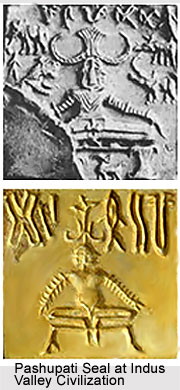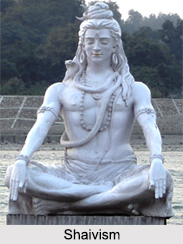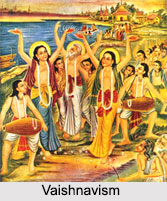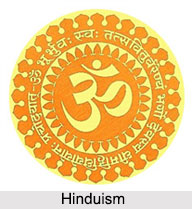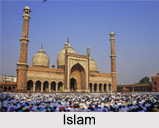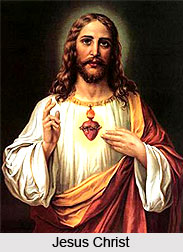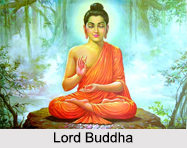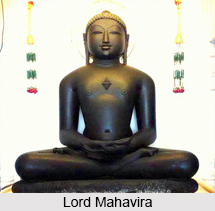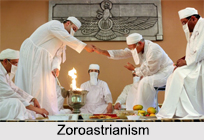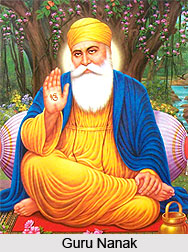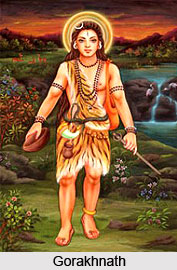 Gorakhnath and members of his order are celebrated in the popular legends of Gorakhnathis. From medieval times onward, Gorakhnath is the well-known wonder-worker and master Yogi of northern and western parts of India. From Nepal to Rajputana, from Punjab to West Bengal, from Sind to the Deccan, tradition and folklore are full of allusions to Gorakhnath and recount his wonderful deeds. He is the famous saint and worker of miracles; the founder and outstanding teacher of the Saivite sect of ascetics, practicers of the Hatha Yoga, who are called the Kanphatas; the great teacher of the Saivite faith, the Brahmanical opponent of the Vaishnava reformers of northern India of the school of Ramananda; the patron saint and tutelary of the state of Goraksa, and finally, the rival and victor over Matsyendranath, who was the ancient Buddhist protector of Nepal.
Gorakhnath and members of his order are celebrated in the popular legends of Gorakhnathis. From medieval times onward, Gorakhnath is the well-known wonder-worker and master Yogi of northern and western parts of India. From Nepal to Rajputana, from Punjab to West Bengal, from Sind to the Deccan, tradition and folklore are full of allusions to Gorakhnath and recount his wonderful deeds. He is the famous saint and worker of miracles; the founder and outstanding teacher of the Saivite sect of ascetics, practicers of the Hatha Yoga, who are called the Kanphatas; the great teacher of the Saivite faith, the Brahmanical opponent of the Vaishnava reformers of northern India of the school of Ramananda; the patron saint and tutelary of the state of Goraksa, and finally, the rival and victor over Matsyendranath, who was the ancient Buddhist protector of Nepal.
In Buddhist Tibetan tradition, he is described as a magician. Some records state that he was the foster-father and the teacher of Muhammad; however, another fragment reports him as having taught Guga the Muslim creed. In Bind he is known as Datar Jamil Shah. Gorakhnath has long since been deified, and, in popular religion, is considered as a representative, even an embodiment, of Lord Shiva. His name is also given to Shiva. He is the creator. In the dice-throwing ordeal in the Rasalu legend he is petitioned as a god. In the story of Heer and Ranjha, he is worshipped with a platter of milk and rice. And he is invoked elsewhere as a god. According to some other popular legends of Gorakhnathis, his name implies his origin.
In Punjab, a legend is current to the effect that Gorakhnath was born of dung and was found by Matsyendranath, who made him a disciple. From Nepal, comes the story that Shiva after he had recited the Yoga doctrine to Parvati, standing on the sea shore, while Matsyendranath (in the form of a fish) was listening, gave something to a woman to eat, with a promise that she would obtain a son. The woman did not eat the substance, but cast it upon a dung-hill. Twelve years later, Matsyendra passed by the same spot and asked to see the child. He there discovered a boy of twelve years. The boy was named Gorakhnath. Matsyendranath became his spiritual and he served as a dutiful disciple. Another story has it that Gorakhnath was a son of Shiva by a cow.
In the legend of Manikchand, Gorakhnath is described as a vidyadhdra (carrying occult knowledge) a kind of supernatural being dwelling in the Himalayas, attending upon Siva and possessing magical powers. He is not only super humanly wise, but is also very powerful. In a contest with Ranjha over the stolen conch Gorakhnath calls himself a great magician, and boasts of power exceeding that of the seventy saints combined.
In the legends of Gorakhnathis, there are some really interesting accounts of Gorakhnath restoring people to life. It is reported that Gorakhnath destroyed the two sons of Matsyendranath, in the presence of a Bania and afterwards restored them to life. Moreover, like many other great ascetics he was able to grant children to barren women. Legends also suggest evidence of Gorakhnath`s magic powers was in his insight. He was also able to exercise power over long distances. In the legends of Gopicand, Gorakhnath contested the power and the place of his rival, Jalandharnath, and sent a follower to break the cooking pots of his opponents, to break their boxes and `to blow them away`. He set fire to their bodies. Lord Vishnu described him as one of the greatest saints, who could only supply patience.
Hence, the several legends of Gorakhnathis show that Gorakhnath was a saint of immense power and knowledge.
